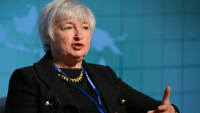
The US Fed raised its short-term policy rate or the Fed rate by 25 basis points, signaling the continuation of monetary tightening. An explanation accompanied by the rate hike defended the rate hike on the ground of rising inflation.
This is only the third time since the financial crisis that the Fed is raising its key rate. The policy rate now rose to 1 per cent.
From the view point of the EMEs, the rate hike may bring more volatility in financial markets in near future. Here, the firm stand of the Fed that rate hike decision will be done in three quarters instead of yearly exercise indicate more scope for market turbulence.
In the long term, the frequent rate hike may drain away capital flows from the EMEs. Â The present rate hike is a signaling point since the financial crisis that the US is going back from an easy liquidity regime. Here, capital flows may difficult to come by for the EMEs.
 The US property and financial assets market felt more activity ever since the new President Donald Trump sworn in.
More than the rate hike, the Fed is facing the uphill task of reducing its ballooned balance sheet of $ 4.t trillion that it amassed during the quantitative easing period. High volume of bond purchase caused the asset rise equally matched by monetary expansion.Â










